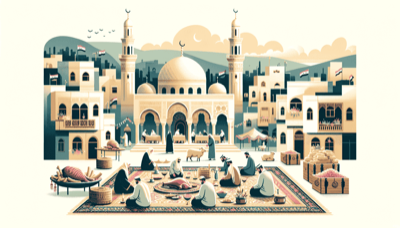We're here to help you keep count of the days to or since a date. Just click the button below and enter your chosen date to get started. Also choose the suggested days or search for a special day above #countingthedays

Eid al-Adha, also known as the Feast of Sacrifice, is one of the most significant Islamic holidays observed globally, including in Syria. It falls on the 10th day of Dhu al-Hijjah, the last month of the Islamic lunar calendar, coinciding with the completion of the Hajj pilgrimage to Mecca.
Eid al-Adha commemorates the willingness of Prophet Ibrahim (Abraham) to sacrifice his son as an act of obedience to God. However, God provided a ram to sacrifice instead. This event is honored by Muslims through Qurbani, the act of sacrificing an animal, typically a sheep, goat, cow or camel.
In Syria, as in other Muslim-majority countries:
On Eid al-Adha in Syria: 1. The day usually starts with a special ritual cleansing followed by dawn prayers (Fajr). 2. Then comes the Eid prayer which takes place shortly after sunrise. 3. After prayers, the Qurbani (sacrifice) is performed. 4. The day continues with visits among family and friends where they exchange gifts and enjoy festive meals. 5. Children often receive money or presents known as 'Eidiya' from elders. 6. Special sweets such as Maamoul (date-filled cookies), Baklava (sweet pastry), and other traditional Syrian desserts are prepared and enjoyed.
Eid al-Adha thus serves as an occasion for Syrian Muslims to practice generosity, reinforce social bonds within their community, celebrate their faith's traditions, and enjoy festive meals